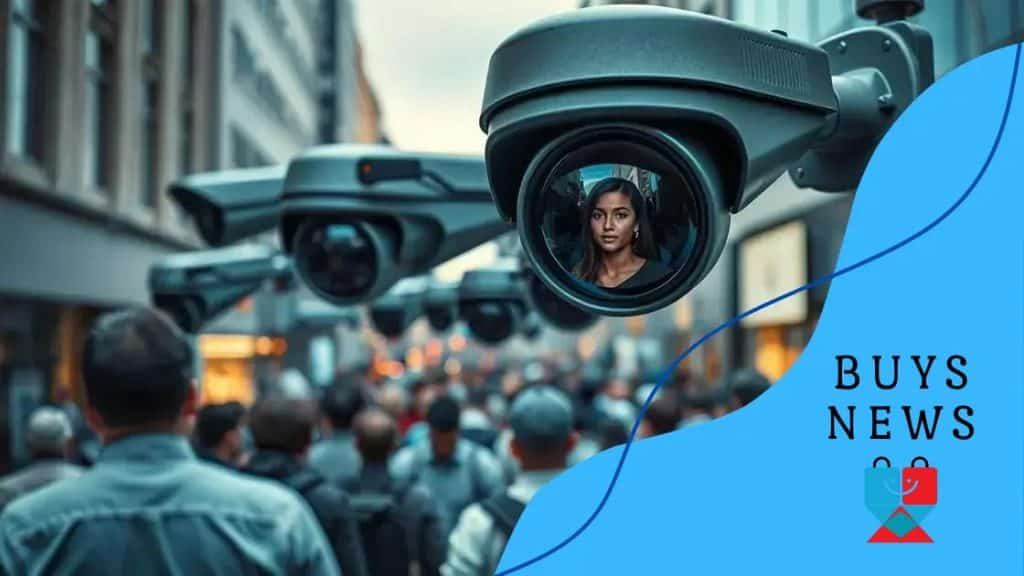The role of facial recognition in enhancing public safety

The role of facial recognition in enhancing public safety includes improving security through accurate identification, streamlining processes in airports, and aiding law enforcement while raising critical privacy and ethical concerns.
The role of facial recognition in enhancing public safety invites a closer look at how technology shapes our security landscape. Can this tech truly reduce crime while respecting our privacy? Let’s dive in.
Understanding facial recognition technology
Understanding facial recognition technology is essential in today’s digital age. This technology identifies and verifies individuals by analyzing facial features from images or videos. It is used in various sectors, enhancing security measures and improving user experiences.
Facial recognition systems work through a series of steps. First, they capture an image of a person’s face. Then, they convert this image into data points, focusing on unique features such as the distances between eyes and the shape of the jaw. These data points create a facial signature that can be compared to existing databases.
How does it work?
The technology relies on algorithms to analyze facial features. Here’s how it functions:
- Image capture: The system takes a photo using a camera.
- Feature extraction: Key facial points are measured.
- Identification: The extracted data is compared to stored profiles.
These steps happen rapidly, allowing real-time recognition in busy environments. This technology is widely used in surveillance, law enforcement, and even unlocking mobile devices, making it a vital tool for modern society.
Applications of facial recognition
Understanding the practical uses of facial recognition helps in recognizing its impact:
- Security: Enhances safety in public spaces.
- Retail: Personalizes shopping experiences by recognizing customers.
- Healthcare: Improves patient identification and service delivery.
With rising applications, challenges regarding privacy and ethics also arise. It’s crucial to balance innovative uses with respect for individual rights. The discourse around facial recognition is ongoing as technology evolves.
How it improves public safety
How facial recognition improves public safety is a crucial topic as we explore modern security measures. This technology enables faster and more accurate identification of individuals, ensuring a safer environment for everyone.
The integration of facial recognition in law enforcement has transformed how police operate. Officers can quickly identify suspects in real-time, reducing response times to potential threats. This technology is increasingly used in crowded places like airports, stadiums, and public events.
Benefits of facial recognition in public safety
Facial recognition offers various advantages for enhancing security:
- Crime prevention: By recognizing criminals in crowds, police can act swiftly.
- Missing persons: This tech helps locate missing individuals by matching their images.
- Access control: Restricts unauthorized access in sensitive areas.
These benefits highlight the significance of facial recognition, but the conversation doesn’t end here. The use of this technology raises important discussions around privacy rights and data security.
Real-world applications of facial recognition
Here are some practical examples of how facial recognition is making an impact:
- Airports: Automated systems identify passengers, improving efficiency.
- Surveillance cameras: These systems monitor public areas for suspicious activities.
- Public events: Security teams can ensure the safety of attendees by identifying known threats.
Facial recognition continues to play a vital role in law enforcement and public safety strategies. Understanding its benefits is essential in navigating the balance between security and privacy.
Ethical concerns and privacy issues

Ethical concerns and privacy issues surrounding facial recognition technology are gaining significant attention. As the use of this technology expands, it raises important questions about how personal data is collected, stored, and utilized.
Privacy advocates express concern about the potential for misuse. Facial recognition can track individuals without their consent in public spaces. This capability poses a risk to personal freedoms and can lead to a surveillance state where people are constantly monitored.
Key ethical concerns
Several ethical issues are critical to the debate:
- Consent: Many individuals are not aware their faces are being scanned in public areas.
- Data security: Sensitive data can be targeted by hackers, leading to potential identity theft.
- Bias: Facial recognition technology may perform poorly on certain ethnic groups, leading to discriminatory practices.
These factors compel us to evaluate the broader implications of this technology on society. Understanding how it operates helps inform better regulations and practices.
The impact on personal privacy
Facial recognition fundamentally changes the landscape of personal privacy. With the ability to identify people from mere images, the risk of invasive monitoring increases. This technology is often used in conjunction with other data collection methods, creating detailed profiles without consent.
In many locations, individuals have little control over how their images are captured and used. This lack of control can foster a sense of vulnerability among citizens. Discussions about ethical guidelines are essential to ensure that innovations in facial recognition don’t come at the cost of privacy rights. As society navigates these challenges, it becomes vital to seek a balance between security and personal freedoms.
Case studies of implementation
Case studies of implementation provide valuable insights into how facial recognition technology is applied in real-world scenarios. By examining different examples, we can better understand its effectiveness and challenges.
One notable case is the use of facial recognition in airports. Many international terminals have adopted this technology to streamline passenger processing. By quickly identifying travelers through automated systems, airports enhance security and reduce wait times. This method allows travelers to move through check-in and boarding more efficiently.
Law enforcement applications
Another significant case study involves law enforcement agencies. For instance, police departments in major cities use facial recognition to identify suspects in real-time during investigations. By analyzing footage from public cameras, officials can track down individuals connected to crimes, which helps in preventing further incidents.
- Crime solving: Helps solve cases faster by identifying suspects from video footage.
- Missing persons: Assists in locating missing individuals through facial matching.
- Event security: Enhances safety at large gatherings by monitoring identified threats.
However, these implementations also raise ethical questions and concerns among the public. The balance between public safety and personal privacy remains a hot topic of debate.
Commercial uses
Another area where facial recognition shines is in retail. Stores are increasingly utilizing this technology to personalize customer experiences. By recognizing returning customers, businesses can tailor services and offers based on previous interactions.
For example, a store might greet a customer by name, suggesting products that align with their interests. This personalized interaction can foster customer loyalty and drive sales.
Overall, these case studies highlight both the benefits and complexities of facial recognition technology in various sectors. They underscore the necessity for continuous dialogue about its ethical use.
The future of facial recognition in society
The future of facial recognition in society is a topic filled with potential and challenges. As technology evolves, its role in various aspects of life will likely grow, sparking discussions about its impact on security, privacy, and daily interactions.
The advancement of facial recognition technologies promises improved accuracy and speed. As algorithms become more sophisticated, they can identify individuals more reliably and with fewer errors. This capability can enhance security processes in environments like airports and large public venues, improving overall safety.
Integration with other technologies
Future developments will likely see facial recognition integrated with other technologies. For instance, using artificial intelligence and machine learning can enhance the facial recognition system. This integration can lead to:
- Smarter security systems: Combining facial recognition with surveillance systems can help detect suspicious activities more effectively.
- Personalized customer experiences: Retailers may use this technology to tailor marketing efforts based on customer profiles.
- Smart cities: Facial recognition could play a role in urban planning and security measures, enhancing public safety.
Such integrations can offer significant advantages, but they must be approached with caution to avoid compromising privacy rights.
Regulatory considerations
The upcoming years will also likely bring changes in regulations concerning facial recognition. Policymakers are increasingly aware of the ethical implications surrounding its use. Discussions about establishing frameworks that protect individuals’ privacy while allowing for technological growth are essential.
Implementing strict guidelines can help ensure that facial recognition technology is used responsibly. This balance will be crucial as society grapples with the trade-offs between safety and freedom.
As this technology continues to develop, its future impact on society will depend on ongoing discussions, ethical considerations, and the willingness of stakeholders to work together. Understanding these dynamics will be vital for navigating the challenges and opportunities ahead.
FAQ – Frequently Asked Questions about Facial Recognition Technology
What are the main benefits of facial recognition technology?
Facial recognition technology improves public safety by quickly identifying individuals, enhancing security at events, and reducing crime rates.
What privacy concerns are associated with facial recognition?
Privacy concerns include the potential for surveillance without consent, misuse of data, and the risk of bias against certain groups.
How is facial recognition technology regulated?
Regulations are being developed to ensure responsible use of facial recognition, focusing on protecting individual rights while allowing for security enhancements.
What is the future of facial recognition technology?
The future includes advancements in accuracy, integration with AI, and the establishment of clearer regulations to balance privacy and security.





